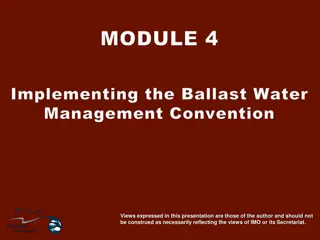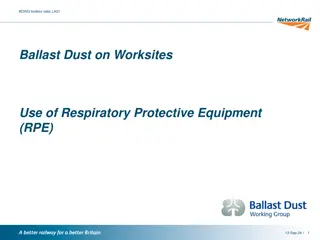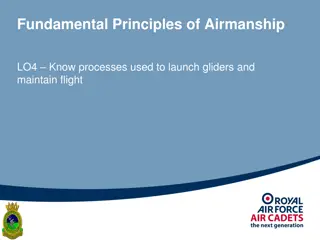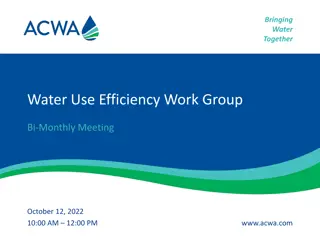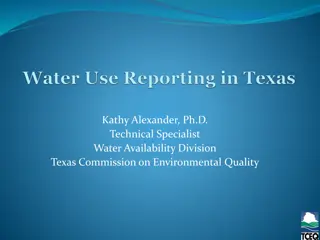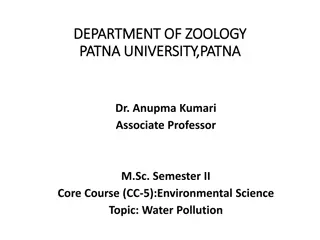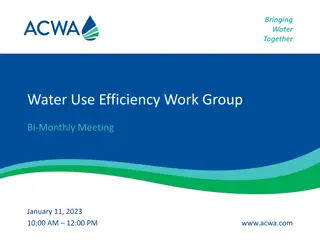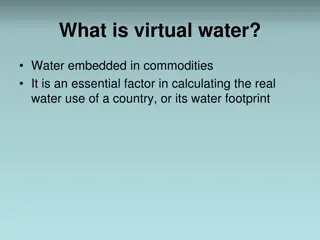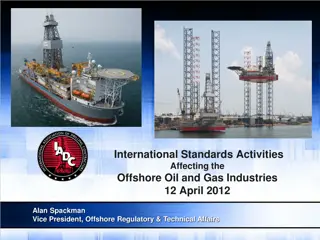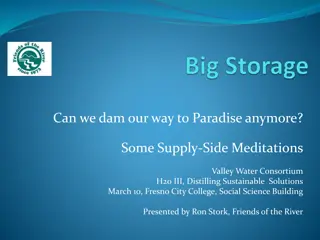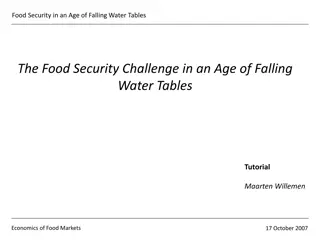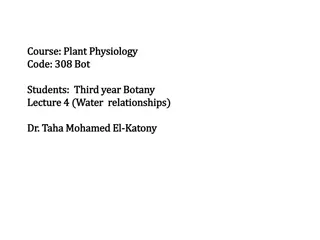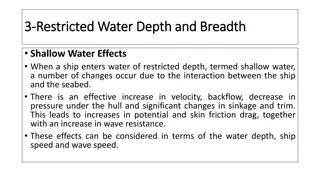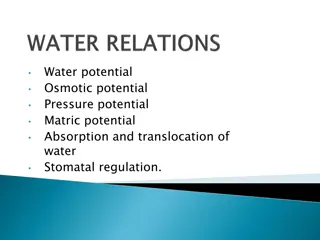Understanding the Use and Effects of Water Ballast in Gliders
Water ballast in gliders allows for increased weight which can affect climb rate, speed, and maneuverability. It is important for cross-country flights to maximize distance, speed, and efficiency. Physics and graphs demonstrate the impact of mass on potential energy in gliding. Utilizing water ballast strategically can enhance performance in various flying conditions.
Download Presentation

Please find below an Image/Link to download the presentation.
The content on the website is provided AS IS for your information and personal use only. It may not be sold, licensed, or shared on other websites without obtaining consent from the author. Download presentation by click this link. If you encounter any issues during the download, it is possible that the publisher has removed the file from their server.
E N D
Presentation Transcript
Water Ballast In A Glider WHAT IS IT GOOD FOR?
What Kind of Glider? Water ballast can only safely be added to a glider prepared to carry it. Usage became widely spread with the advent of composite construction Bladders used to be found in front of spar, now integral tanks Location is mostly in the wings, some in the tail Ballast weight became insanely high in last 20 years, now up to 400+lbs (single seater) Water has to be dumped before landing Flapped gliders can carry more ballast weight
Need powerful tow plane, higher tow speeds Increase in runway length needed Stall speed of glider is higher Effects of Ballast Climb rate in thermals, circling speed, turn radius Climb rate on tow is diminished Glider is less maneuverable Note that these are all negatives! Higher demands on pilot
All this is only important if you fly X-Country! Goals for x-country flight: Cover a maximum amount of distance (limitation is thermal activity) Cover a given amount of distance in shortest possible time (Speed Task) Achieve the highest average speed over a certain time interval (OLC speed) General effects of ballast Fly at a higher speed with the same glide ratio as un-ballasted Convert dynamic energy into potential energy more efficiently when entering thermal Dolphin-style flying on good days, streeting Have a smoother ride on a bumpy ridge, at higher speeds than un-ballasted Positive Effects of Ballast
Physics and Graphs Change of Glider Polar with mass
Potential Energy = Mass (in Kg or lbs) times Delta H (Height gained in m or feet) My ASG 29 had an empty mass with pilot of 900 lbs Max water load was 370 lbs or 40% of empty mass Potential energy once at cloud base is 40% higher than without water Visible effect: When running with an unballasted glider at 100 knots for comparison, you magically see the other guy hopelessly sink below you You arrive higher at next thermal, possibly using a better part of it More physics
Great, why dont we do that every day? There s no Free Lunch All that weight needs to be lifted up to where it works for you Coring and centering a thermal Higher circling speed, larger radius Climb rate is lower I got him on the climb, he got me on the run Early and late in the day, conditions may not allow decent climbs You got to know You've got to know when to hold 'em Know when to fold 'em Know when to walk away And know when to run (Kenny Rogers, The Gambler)
Very Slowly, work your way up Try 5 gal (41.6 lbs) in each wing For Standard Class, be prepared for feeling the effect on tow Tow pilot needs to be aware of ballast Impact on stall and circling speeds will be minimal Inter-thermal speeds should be increased Go up in ballast amount incrementally, note the effects on handling Cg position will mostly change with ballast, have proper weight and balance done, adjust cg by adding tail water or weight in rear battery box Dump water while on the ground, note the time it takes Open dump valves early so that water is gone when at position Add dump ballast to landing check list How to get started
Changes to Flight Strategy Picking only the strongest thermals becomes even more important You need to be experienced and relaxed in thermal flight optimization Reading and taking advantage of cloud line-ups becomes even more important Don t circle unless you really have to Leave the thermal when climb rate is down to 70% of strongest value Being low in weak and broken thermals becomes even more frustrating When conditions weaken, consider dumping part of your water You will most likely find a really strong thermal right after doing so Let your flight computer know how much water you carry, it will adjust speed- to-fly and final glide. Adjust MC value for the lower climb rates you achieve



